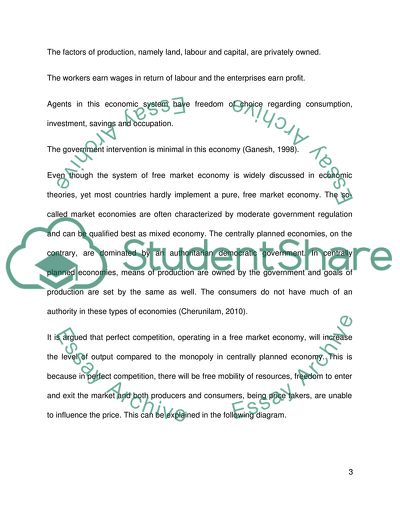Cite this document
(The transition from a centrally planned economy to a free market or a Coursework - 1, n.d.)
The transition from a centrally planned economy to a free market or a Coursework - 1. https://studentshare.org/macro-microeconomics/1806432-the-transition-from-a-centrally-planned-economy-to-a-free-market-or-a-mixed-economy-involves-state-owned-enterprises-being-privatised-but-economists-debate-as-to-whether-this-is-actually-beneficial-to-the-countrys-economy-examples-of-china-and-rus
The transition from a centrally planned economy to a free market or a Coursework - 1. https://studentshare.org/macro-microeconomics/1806432-the-transition-from-a-centrally-planned-economy-to-a-free-market-or-a-mixed-economy-involves-state-owned-enterprises-being-privatised-but-economists-debate-as-to-whether-this-is-actually-beneficial-to-the-countrys-economy-examples-of-china-and-rus
(The Transition from a Centrally Planned Economy to a Free Market or a Coursework - 1)
The Transition from a Centrally Planned Economy to a Free Market or a Coursework - 1. https://studentshare.org/macro-microeconomics/1806432-the-transition-from-a-centrally-planned-economy-to-a-free-market-or-a-mixed-economy-involves-state-owned-enterprises-being-privatised-but-economists-debate-as-to-whether-this-is-actually-beneficial-to-the-countrys-economy-examples-of-china-and-rus.
The Transition from a Centrally Planned Economy to a Free Market or a Coursework - 1. https://studentshare.org/macro-microeconomics/1806432-the-transition-from-a-centrally-planned-economy-to-a-free-market-or-a-mixed-economy-involves-state-owned-enterprises-being-privatised-but-economists-debate-as-to-whether-this-is-actually-beneficial-to-the-countrys-economy-examples-of-china-and-rus.
“The Transition from a Centrally Planned Economy to a Free Market or a Coursework - 1”. https://studentshare.org/macro-microeconomics/1806432-the-transition-from-a-centrally-planned-economy-to-a-free-market-or-a-mixed-economy-involves-state-owned-enterprises-being-privatised-but-economists-debate-as-to-whether-this-is-actually-beneficial-to-the-countrys-economy-examples-of-china-and-rus.


